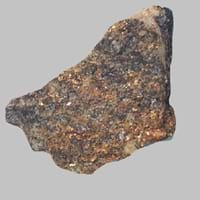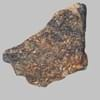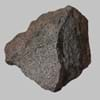Definition
Adakite is an intermediate to felsic volcanic rock that has geochemical characteristics of magma which is said to be formed by partial melting of altered basalt that is subducted below volcanic arcs
Cataclasite is a type of cataclastic rock that is formed by fracturing and comminution during faulting. It is normally cohesive and non-foliated, consisting of angular clasts in a finer-grained matrix
Origin
Adak, Aleutian Islands
Swiss Alps, Europe
Discoverer
Defant and Drummond
Michael Tellinger
Etymology
From Adak, Aleutian Islands
From the Italian word cataclasi
Class
Igneous Rocks
Metamorphic Rocks
Sub-Class
Durable Rock, Medium Hardness Rock
Durable Rock, Medium Hardness Rock
Group
Volcanic
Not Applicable
Other Categories
Fine Grained Rock, Medium Grained Rock, Opaque Rock
Fine Grained Rock, Opaque Rock
Texture
Porphyritic
Clastic
Color
Black, Brown, Light to Dark Grey
Brown, Green, White, Yellow
Durability
Durable
Durable
Appearance
Dull and Soft
Dull and Banded
Interior Uses
Decorative Aggregates, Floor Tiles, Homes, Hotels, Kitchens
Decorative Aggregates, Homes
Exterior Uses
As Building Stone, As Facing Stone, Office Buildings
As Building Stone, As Facing Stone, Paving Stone
Other Architectural Uses
Whetstones
Curbing
Construction Industry
As Dimension Stone, Cobblestones, Rail Track Ballast, Roadstone
As Dimension Stone, Building houses or walls, Cement Manufacture, Construction Aggregate, for Road Aggregate
Medical Industry
Not Yet Used
Not Yet Used
Antiquity Uses
Monuments, Sculpture, Small Figurines
Artifacts
Commercial Uses
Commemorative Tablets, Pottery, Used in aquariums
Commemorative Tablets, Creating Artwork
Types
Not Available
Protocataclasite, Mesocataclasite, Ultracataclasite and Foliated cataclasite
Features
Has High structural resistance against erosion and climate, Host rock for Diamond, Very fine grained rock
Easily splits into thin plates, Is one of the oldest rock
Archaeological Significance
Monuments
Used
Not Yet Used
Famous Monuments
Data Not Available
Not Applicable
Sculpture
Used
Not Yet Used
Famous Sculptures
Data Not Available
Not Applicable
Figurines
Used
Not Yet Used
Formation
Adakite rocks are formed when the hydrous fluids are released from minerals that break down in metamorphosed basalt, and rise into the mantle they initiate partial melting.
Cataclasiste rocks mainly form by pressure deep under the Earth's surface, from the extreme heat caused by magma or by the intense collisions and friction of tectonic plates.
Mineral Content
Olivine, Plagioclase, Pyroxene
Albite, Apatite, Augite, Biotite, Calcite, Enstatite, Epidote, Feldspar, Micas, Muscovite or Illite, Pyroxene, Quartz
Compound Content
Aluminium Oxide, MgO, Silicon Dioxide
Silicon Dioxide
Types of Metamorphism
Cataclastic Metamorphism, Contact Metamorphism, Impact Metamorphism, Regional Metamorphism
Not Applicable
Types of Weathering
Chemical Weathering, Mechanical Weathering
Mechanical Weathering
Types of Erosion
Coastal Erosion, Sea Erosion, Water Erosion
Coastal Erosion, Wind Erosion
Grain Size
Fine to Medium Grained
Fine Grained
Streak
Bluish Black
Black
Porosity
Less Porous
Less Porous
Luster
Grainy, Pearly and Vitreous
Vitreous
Cleavage
Not Available
Not Available
Toughness
Not Available
Not Available
Specific Gravity
Not Available
2.1
Transparency
Opaque
Translucent to Opaque
Density
Not Available
2.9-3.1 g/cm3
Resistance
Heat Resistant, Pressure Resistant, Wear Resistant
Heat Resistant, Impact Resistant, Pressure Resistant
Deposits in Eastern Continents
Asia
India, Russia
China, India, Russia, Saudi Arabia, South Korea
Africa
Ethiopia, Somalia, South Africa
Egypt, Ethiopia, Kenya, Madagascar, Morocco, South Africa
Europe
Iceland
England, Finland, France, Spain, United Kingdom
Others
Not Yet Found
Not Yet Found
Deposits in Western Continents
North America
Canada, USA
Canada, USA
South America
Brazil
Argentina, Colombia
Deposits in Oceania Continent
Australia
Not Yet Found
Central Australia, Western Australia
Adakite vs Cataclasite Characteristics
Though some rocks look identical, they have certain characteristics which distinguish them from others. Characteristics of rocks include texture, appearance, color, fracture, streak, hardness etc. Adakite vs Cataclasite characteristics assist us to distinguish and recognize rocks. Also you can check about Properties of Adakite and Properties of Cataclasite. Learn more about Adakite vs Cataclasite in the next section. The interior uses of Adakite include Decorative aggregates, Floor tiles, Homes, Hotels and Kitchens whereas the interior uses of Cataclasite include Decorative aggregates and Homes. Due to some exceptional properties of Adakite and Cataclasite, they have various applications in construction industry. The uses of Adakite in construction industry include As dimension stone, Cobblestones, Rail track ballast, Roadstone and that of Cataclasite include As dimension stone, Building houses or walls, Cement manufacture, Construction aggregate, For road aggregate.
More about Adakite and Cataclasite
Here you can know more about Adakite and Cataclasite. The life cycle of a rock consists of formation of rock, composition of rock and transformation of rock. The composition of Adakite and Cataclasite consists of mineral content and compound content. The mineral content of Adakite includes Olivine, Plagioclase, Pyroxene and mineral content of Cataclasite includes Albite, Apatite, Augite, Biotite, Calcite, Enstatite, Epidote, Feldspar, Micas, Muscovite or Illite, Pyroxene, Quartz. You can also check out the list of all Igneous Rocks. When we have to compare Adakite vs Cataclasite, the texture, color and appearance plays an important role in determining the type of rock. Adakite is available in black, brown, light to dark grey colors whereas, Cataclasite is available in brown, green, white, yellow colors. Appearance of Adakite is Dull and Soft and that of Cataclasite is Dull and Banded. Properties of rock is another aspect for Adakite vs Cataclasite. Hardness of Adakite and Cataclasite is 3-4. The types of Adakite are Not Available whereas types of Cataclasite are Protocataclasite, Mesocataclasite, Ultracataclasite and Foliated cataclasite. Streak of rock is the color of powder produced when it is dragged across an unweathered surface. The streak of Adakite is bluish black while that of Cataclasite is black. The specific heat capacity of Adakite is Not Available and that of Cataclasite is Not Available. Depending on the properties like hardness, toughness, specific heat capacity, porosity etc., rocks are resistant to heat, wear, impact, etc.Adakite is heat resistant, pressure resistant, wear resistant whereas Cataclasite is heat resistant, impact resistant, pressure resistant.





